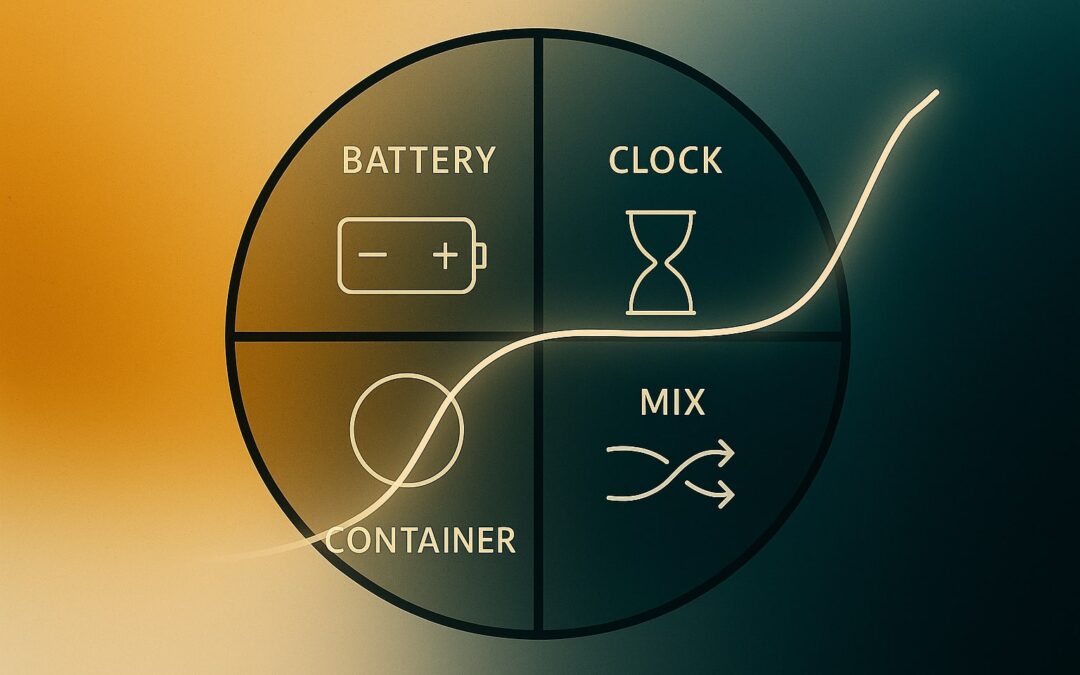TL;DR — The origin of life doesn’t require a one-off miracle. It needs a battery (H₂/CO₂ energy), a container (vesicles, pores, or droplets), a clock (cycles like tides/day–night), and mixing. Those four pieces drive autocatalysis, which eventually yields template-based copying (RNA-like polymers). Once copies vary, evolution takes over. We show how this plays out on early Earth, how new redox-driven mineral fronts on Mars back it up, and why exoplanet K2-18b is a natural cross-check.
Why origin-of-life stories usually stall at “…and then a miracle occurs”
Most popular theories zoom in on one shiny piece — RNA world (replication), metabolism-first (energy and catalysis), lipid-world (compartments), or wet–dry (polymerization). Each is necessary-ish, none is sufficient alone. What’s been missing is a minimal set that works together in the wild, using only planet-plausible ingredients — no enzymes, no lab magic.
We call that set the Minimal Viable Spark (MVS). It’s the shortest, testable route from rock-and-water chemistry to something that copies with heritable variation.
The Spark recipe (MVS) in one line
Battery + Clock + Container + Mix → Autocatalysis → Templated copying → Evolution
-
Battery: A standing energy imbalance. Universally, that’s H₂ (donor) against CO₂ (acceptor), often with a ΔpH (alkaline vs. acidic water).
-
Clock: Rhythms that push chemistry over small barriers — wet–dry, day–night, tidal, thermal.
-
Container: Places that keep reagents together long enough to matter — mineral pores, fatty-acid vesicles, or aerosol/cloud droplets.
-
Mix: Transport and shear — vent flow, tides, waves, circulation — to refresh reactants, remove waste, and apply physical selection.
Those four pieces generate autocatalytic networks (reactions that speed themselves up). Add an information polymer that copies with errors and you’ve crossed the evolutionary threshold.
The crucibles, the ingredients, the stirrers
Crucibles (where it happens)
-
Alkaline hydrothermal vents: porous Fe/Ni-sulfide chimneys with built-in ΔpH and H₂ supply (a natural battery).
-
Intertidal hot-spring films: wet–dry cycles that stitch monomers into long RNA/peptide chains and package them in vesicles.
-
Cloud/ocean droplets (if no land): fast-cycling micro-labs for photochemistry and concentration.
Ingredients (what goes in)
Water; H₂ + CO₂; sulfide and phosphate; K⁺/Mg²⁺ salts; trace metals (Fe, Ni, Zn…); simple organics and nitriles (from rocks, atmosphere, and meteorites).
Stirrers (what moves it)
Tides and waves, day–night light, vent flow and convection, thermal pulses, and global circulation (on tidally locked worlds).
What just changed (and why it matters)
-
In rocks: Mars’ Jezero crater preserves iron-phosphate ↔ iron-sulfide reaction fronts that look exactly like self-sustaining redox batteries — the geometry and minerals our model predicts.
-
In the sky: JWST robustly sees methane in a hydrogen-rich atmosphere on K2-18b; the CO₂ claim is debated, and there are no confirmed biosignatures yet, the very disequilibrium pair (H₂/CO₂) our Spark uses. Ocean confirmed? Not yet — but either a Hycean ocean or cloud-deck droplets supply containers and cycles.
Put simply: the physics is showing up in nature.
The storyboard (10 steps from rock to replicator)
- Battery forms. Rock-water chemistry (serpentinization) makes H₂ and alkaline fluids; or an H₂-rich sky overlies CO₂-rich water.
- Clock starts. Tides/day–night/wet–dry/thermal cycles alternate concentration and relaxation.
- Containers appear. Vesicles self-assemble; pores and droplets abound.
- Feedstock arrives. CO₂, H₂, HS⁻, phosphate, nitriles; meteoritic sprinkles.
- Catalysis lights up. Fe/Ni sulfides and photoredox loops pull CO₂ downhill into C₁–C₄ acids and thioesters.
- Currencies emerge. Acetyl phosphate (AcP) and pyrophosphate (PPi) appear; local ΔpH does work.
- Monomers form. Ribonucleotide precursors accumulate, then get activated (dry-down or AcP/PPi).
- Polymers form. Wet–dry stitching yields tens-long RNA and short peptides.
- Packaging. Rewetting encapsulates cargo; some vesicles inherit more useful stuff.
- Copying + selection. Error-prone template copying occurs; cargo-rich protocells grow/divide faster and persist. Evolution begins.
Cross-planet overlap (why this isn’t Earth-only)
Wherever you have water + H₂/CO₂ + catalysts + containers + cycles, the same sequence wants to run.
-
Early Earth: vents + hot-spring terraces + strong lunar tides.
-
K2-18b: if Hycean, swap in seafloor vents and an ocean microlayer; if mini-Neptune, lean on cloud droplets and photoredox. Either way, the battery-clock-container-mix quartet holds.
How to falsify this (not just support it)
One setup, four wins (no enzymes):
• Σ(C₂–C₄) logistic S-curve co-registered with a µW exotherm (heat tracks dΣ(C₂–C₄)/dt).
• Net CO₂ → C₂–C₄ under H₂ on Fe/Ni sulfides, plus AcP or PPi ≥ 3σ above blank in water.
• RNA ≥ 30-mers inside vesicles (true phosphodiester), under wet–dry cycles from plausible feeds.
• Compartment selection: cargo-rich protocells outgrow controls in size-matched competitions and keep the edge after re-seeding.
Miss one? We know which link to strengthen — battery, clock, container, mix.
Why this matters (and what’s next)
-
It collapses the origin problem into five moving parts you can build in a lab or look for on other worlds.
-
It replaces “and then a miracle occurs” with stepwise, testable mechanics.
-
It scales: Mars samples can check for redox fronts + organics; JWST/ARIEL can check for persistent disequilibria and phase patterns consistent with active chemistry.
Cheat-sheet (put this on the lab wall)
Battery + Clock + Container + Mix → Autocatalysis → Templated copying → Evolution
If a world supplies those four inputs, the spark is a bounded inevitability, not a miracle.
